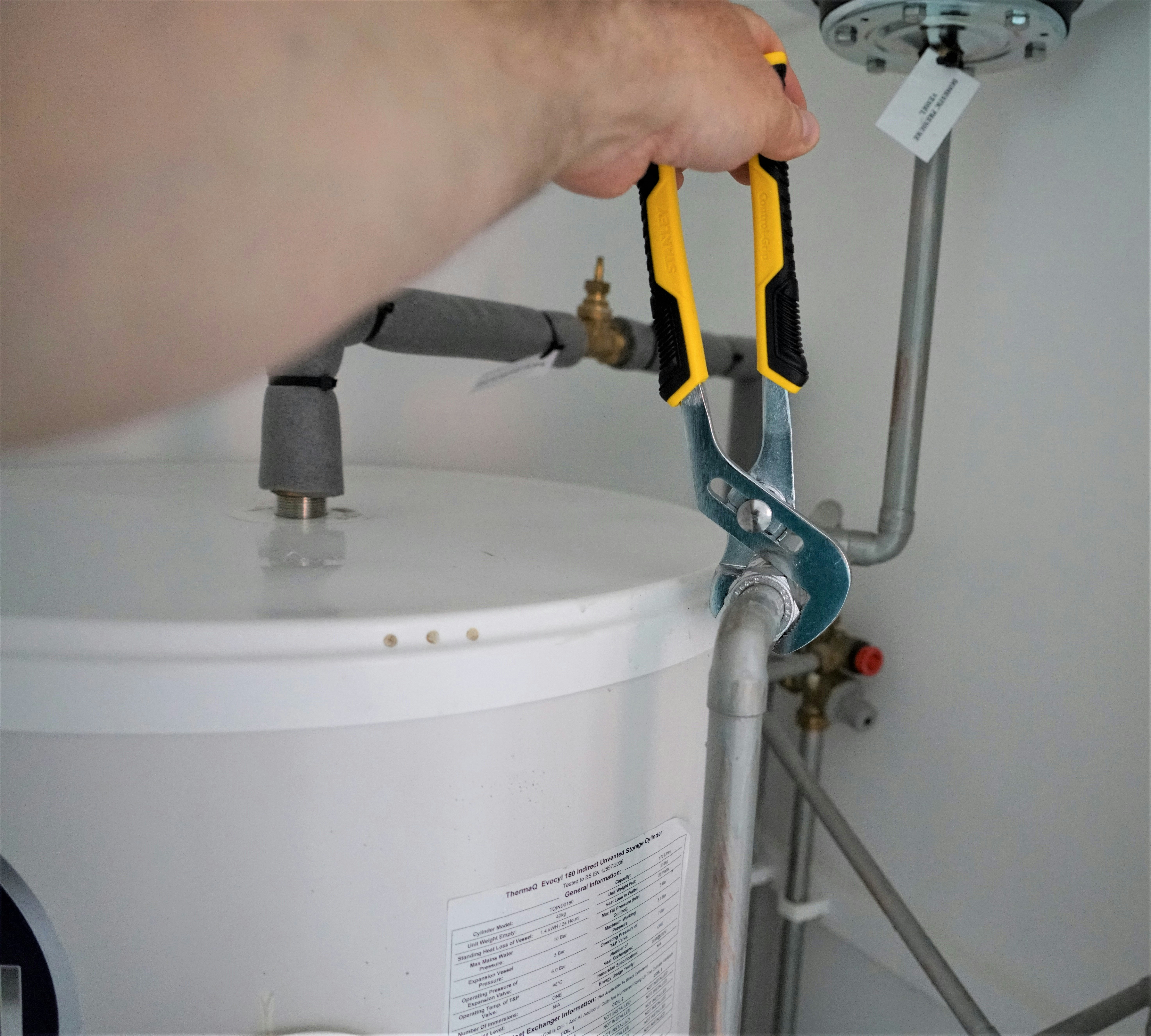Are you tired of dealing with a stubbornly clogged kitchen sink? Look no further! In this article, you will find ten genius hacks that will help you unclog your kitchen sink in no time. From simple tricks using household items to clever techniques, these easy-to-follow solutions will save you time, money, and the frustration of a backed-up sink. Get ready to say goodbye to clogs and hello to a smoothly running-kitchen sink!
Table of Contents
10 Genius Kitchen Sink Hacks
1. Use a Plunger

1.1 Basic Plunger Technique
The basic plunger technique is a tried and true method for unclogging a kitchen sink. Here’s how you can do it:
- First, fill the sink with enough water to cover the plunger cup. This will create a seal and improve the effectiveness of the plunging.
- Place the plunger over the drain, making sure it covers the entire opening.
- Firmly press the plunger up and down, creating a suction and pressure that dislodges the clog. Repeat this motion several times until you feel the water draining freely.
1.2 Hot Water and Dish Soap Method
If the basic plunger technique doesn’t work, you can try the hot water and dish soap method to tackle the clog. Follow these steps:
- Boil a pot of water on the stove.
- While the water is heating, pour a generous amount of dish soap down the drain. The soap will act as a lubricant to help break up the clog.
- Once the water has come to a boil, carefully pour it down the drain. The hot water, combined with the dish soap, can often dissolve the clog and allow the water to flow freely again.
2. Vinegar and Baking Soda Method
2.1 Preparing the Mixture
Vinegar and baking soda are two common household ingredients that, when combined, can create a powerful cleaning and unclogging agent. Here’s how you can prepare the mixture:
- Start by pouring one cup of baking soda down the drain.
- Follow this with one cup of vinegar. The reaction between the two ingredients will cause a fizzing action, which helps break down the clog.
2.2 Applying the Mixture
After preparing the vinegar and baking soda mixture, follow these steps to apply it to the clogged sink:
- Cover the drain with a plug or a cloth to prevent the mixture from escaping.
- Allow the mixture to sit in the drain for about 30 minutes. This gives it time to work on breaking down the clog.
- After the recommended time has passed, remove the plug or cloth and flush the drain with hot water. The combination of the vinegar and baking soda should have loosened the clog, allowing it to wash away.
3. Boiling Water Method
3.1 Steps to Follow
Using boiling water is a simple and effective method to clear away many types of clogs. Here’s how you can use this method:
- Start by bringing a kettle or pot of water to a rolling boil.
- Carefully pour the boiling water down the drain in two to three stages, allowing a few seconds between each pour. This gradual approach helps break up the clog without overwhelming the pipes.
- After the final pour, wait for a few minutes to see if the clog has been cleared. If the water starts draining, then the clog has likely been resolved.
3.2 Precautions
While using boiling water is generally safe, it’s important to take some precautions to prevent any accidents or damage:
- Avoid using boiling water if you have PVC pipes, as they can be sensitive to high temperatures.
- Always handle boiling water with extreme caution, using oven mitts or other protective gear to avoid burns.
- Do not use boiling water if your sink is made of porcelain, as it can crack or chip under extreme heat.
4. Salt and Boiling Water Method

4.1 Mixing the Solution
Adding salt to boiling water can enhance its ability to dissolve clogs. Here’s how you can mix the solution:
- Boil a kettle or pot of water.
- While the water is heating, pour half a cup of salt down the drain. The coarse texture of salt helps scrub away debris and break down the clog.
4.2 Pouring the Solution
Once you’ve prepared the salt and boiling water mixture, follow these steps to pour it down the drain:
- Once the water has come to a boil, carefully pour it down the drain, ensuring that the salt is flushed away with the hot water.
- Allow the solution to sit for a few minutes, allowing the heat and salt to assist in dissolving the clog.
- After the recommended time has passed, run hot water down the drain to flush away any remaining debris and clear the clog.
5. Wire Hanger Method
5.1 Creating a Hook
If you have a stubborn clog that cannot be fixed by plunging or using liquid solutions, you can try using a wire hanger to physically remove the blockage. Follow these steps:
- Start by straightening a wire hanger until it’s in a long, straight line.
- Bend one end of the hanger into a small hook shape. This will allow you to reach and maneuver the clog.

5.2 Inserting and Maneuvering the Hanger
Once you’ve created a hook on the wire hanger, follow these steps to insert and maneuver it in your drain:
- Carefully insert the hooked end of the hanger into the drain, gently pushing it down until you feel resistance.
- Use the hook to grab onto any debris or clogs and pull them back towards you. Be cautious not to push the clog further down the drain.
6. Wet and Dry Vacuum Method
6.1 Switching to Wet Mode
If you have access to a wet and dry vacuum, you can utilize it to remove clogs effectively. Here’s how you can switch the vacuum to wet mode:
- Start by ensuring that the vacuum is unplugged.
- Remove any dry debris or attachments from the vacuum.
- Locate the switch or dial on the vacuum that allows you to switch between wet and dry mode. Follow the manufacturer’s instructions on how to adjust the vacuum.
6.2 Using a Towel to Create a Seal
After switching your vacuum to wet mode, follow these steps to use it for unclogging purposes:
- Take a clean towel and fold it into a thick, rectangular shape.
- Place the towel around the vacuum hose, creating a seal between the hose and the drain.
- Turn on the vacuum and allow it to create suction, pulling the clog or debris towards the vacuum.
7. Caustic Soda Method
7.1 Safety Precautions
Caustic soda, also known as sodium hydroxide, is a potent chemical that can effectively dissolve tough clogs. However, it’s essential to take proper precautions when handling it:
- Always wear protective gloves, goggles, and clothing when working with caustic soda, as it can cause severe burns and eye damage.
- Work in a well-ventilated area or wear a mask to avoid inhaling any fumes.
- Keep caustic soda away from children and pets, as it is highly toxic.
7.2 Pouring and Flushing with Hot Water
Once you’ve taken the necessary precautions, follow these steps to use caustic soda to remove a clog:
- Start by pouring three cups of cold water into a non-metallic container.
- Carefully add one cup of caustic soda to the water, stirring gently until it dissolves. Be cautious not to splash the mixture.
- Slowly pour the mixture down the drain, ensuring it reaches the clog.
- Allow the solution to sit for 20-30 minutes to break down the clog.
- After the recommended time, flush the drain with hot water to clear away any remaining debris.
8. Plumber’s Snake Method
8.1 Inserting the Snake
A plumber’s snake, also known as a drain auger, is a flexible tool that can effectively remove stubborn clogs. Here’s how you can use it:
- Start by wearing gloves and protective eyewear.
- Insert the end of the snake into the drain, slowly pushing it forward until you encounter resistance.
- Twist and push the snake to help it navigate through the clog.
8.2 Rotating and Removing the Snake
Once the snake is inserted into the drain, follow these steps to rotate and remove it while dislodging the clog:
- Begin rotating the snake handle in a clockwise motion. This twisting motion helps the snake grasp onto the clog.
- Pull the snake out slowly, allowing the barbs or hooks on the end to grip the clog.
- If you encounter resistance while pulling out the snake, rotate it counterclockwise to help break up the clog.
- Continue pulling and rotating until the snake is fully removed from the drain.
9. Using a Wet Cloth and Pressure
9.1 Preparing the Wet Cloth
If you have a clog caused by suction or pressure, you can try using a wet cloth to build up pressure and dislodge the blockage. Here’s how you can do it:
- Take a clean cloth and dampen it with hot water.
- Fold the cloth and press it firmly over the drain, creating a seal between the cloth and the sink.
9.2 Applying Pressure
Once you’ve prepared the wet cloth, follow these steps to apply pressure and unclog the sink:
- Using both hands, press down on the cloth with as much force as possible. This pressure will help dislodge the clog.
- Maintain the pressure for a few seconds before releasing it.
- Repeat this process several times, alternating between applying pressure and releasing it. The combination of the pressure and release can often force the clog to break apart and clear the drain.
10. Calling a Professional Plumber
10.1 Signs to Look For
If all else fails, it may be time to call a professional plumber. Here are some signs that indicate you need professional help:
- The clog persists despite attempting multiple unclogging methods.
- Foul odors emanate from the drain or sink.
- Slow drainage or complete blockage occurs frequently.
- Gurgling sounds come from the pipes.
10.2 Benefits of Professional Help
While DIY methods are effective in many cases, there are several benefits to calling a professional plumber for help:
- Expertise: Professional plumbers have the necessary knowledge and experience to diagnose and resolve complex clogs.
- Time-Saving: Hiring a professional can save you valuable time and effort compared to attempting various methods yourself.
- Long-Term Solutions: Plumbers can identify underlying issues that may be causing recurring clogs and provide comprehensive solutions.
In conclusion, a clogged kitchen sink can be frustrating, but there are many effective methods to unclog it. From using a plunger to calling a professional plumber, you now have a range of options to choose from. Remember to take safety precautions and select the method that best suits your situation. With these genius hacks, you’ll be able to restore proper drainage and enjoy a smoothly functioning kitchen sink once again!

